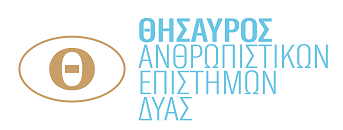Concept information
ΠΡΟΤΙΜΩΜΕΝΟΣ ΟΡΟΣ
2255Gestures (Visual animal communication systems)
ΠΛΑΤΥΤΕΡΟΙ ΟΡΟΙ
ΔΙΕΥΚΡΙΝΙΣΤΙΚΗ ΣΗΜΕΙΩΣΗ
- The best known form of communication involves the display of distinctive body parts, or distinctive bodily movements; often these occur in combination, so a movement acts to reveal or emphasize a body part. A notable example is the presentation of a parent herring gull’s bill to its chick as a signal for feeding. Like many gulls, the herring gull has a brightly coloured bill, yellow with a red spot on the lower mandible near the tip. When the parent returns to the nest with food, it stands over its chick and taps the bill on the ground; this elicits a begging response from a hungry chick (pecking at the red spot), which stimulates the parent to regurgitate food. The complete signal therefore involves a distinctive morphological feature (body part), the red-spotted bill, and a distinctive movement (tapping towards the ground) which makes the red spot highly visible to the chick. While all primates use some form of gesture, Frans de Waal concluded that apes and humans are unique in that only they use intentional gestures to communicate. He tested the hypothesis that gestures evolve into language by studying the gestures of bonobos and chimps.
ΣΥΝΤΕΛΕΣΤΗΣ
- Katsiadakis Helen (AA)
ΔΗΜΙΟΥΡΓΟΣ
- Karasimos Athanasios (AA)
ΝΟΤΑΤΙΟΝ
- 2255
ΣΕ ΑΛΛΕΣ ΓΛΩΣΣΕΣ
URI
https://humanitiesthesaurus.academyofathens.gr/dyas-resource/Concept/2255
{{toUpperCase label}}
{{#each values }} {{! loop through ConceptPropertyValue objects }}
{{#if prefLabel }}
{{/if}}
{{/each}}
{{#if notation }}{{ notation }} {{/if}}{{ prefLabel }}
{{#ifDifferentLabelLang lang }} ({{ lang }}){{/ifDifferentLabelLang}}
{{#if vocabName }}
{{ vocabName }}
{{/if}}
